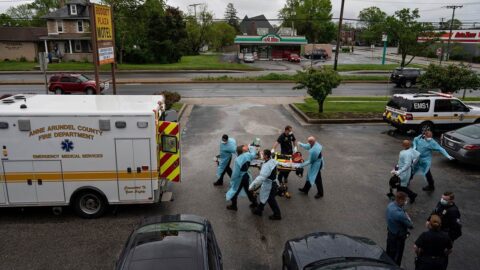The actress Tanya Roberts died from a urinary tract infection that developed into sepsis, an outcome that is more common than realized, especially among older women, doctors say.
Roberts, 65, died at Cedars-Sinai Medical Center in Los Angeles, her long-time partner, Lance O’Brien, and spokesman Mike Pingel both told NBC News on Tuesday. Roberts, best known for the 1984 James Bond film “A View to a Kill” and television’s “That ’70s Show,” had a urinary tract infection, or UTI, that spread to her kidneys and gall bladder, according to both men.
The most common type of UTIs begin as bladder infections, which usually respond to antibiotics. But it can become potentially fatal if the infection spreads to the kidneys.
Sepsis occurs when the body’s immune system goes haywire when trying to stamp out an infection that has gotten into the bloodstream and starts attacking the organs.
Up to 31 percent of sepsis cases start as UTIs, representing 2.8 million to 9.8 million cases in the U.S. and Europe, leading to as many as 1.6 million deaths, according to the European Association of Urology.
“The kidney is a spongy organ filled with blood vessels,” said Dr. Amin Herati, a urologist and director of men’s health at the Brady Urological Institute at the Johns Hopkins School of Medicine. “Whenever bacteria have a chance to climb up the urinary tract, they have easier access to get into the bloodstream.”
What causes sepsis?
Women and girls have increased risk because their urethras are shorter and closer to the rectum, which makes it easier for bacteria to enter the urinary tract, according to the Centers for Disease Control and Prevention. Other risk factors for a UTI that could lead to sepsis include:
- age (55 and older)
- diabetes
- kidney stones
- other issues that can cause blockage of the ureter
Once bacteria get into the blood, “the body responds aggressively and can cause damage to the brain, kidneys and lungs,” said Dr. Christopher Seymour, a sepsis specialist and an associate professor of critical care medicine at the University of Pittsburgh School of Medicine. “As the immune system responds it can trigger a cascade of proteins that affect blood vessels and tissues.”
Sepsis causes the immune response to get out of whack, Seymour said
“In some areas it’s going too fast and in others it’s going too slow,” said Seymour. “That leads to the threats to the organs.”
About 1 in 5 people who develop sepsis in the hospital doesn’t survive, “even with all of our best medicines,” said Seymour.
There isn’t one clear symptom that signals an infection has turned into sepsis. “The long and short of it is that no single sign or symptom says septic, like chest pain can indicate a heart attack,” said Seymour. “That’s why we often see people who present late and can succumb to an otherwise treatable infection.”
The warning signs of sepsis include:
- malaise
- high fever
- dizziness
- low blood pressure
- trouble breathing










Recent Comments